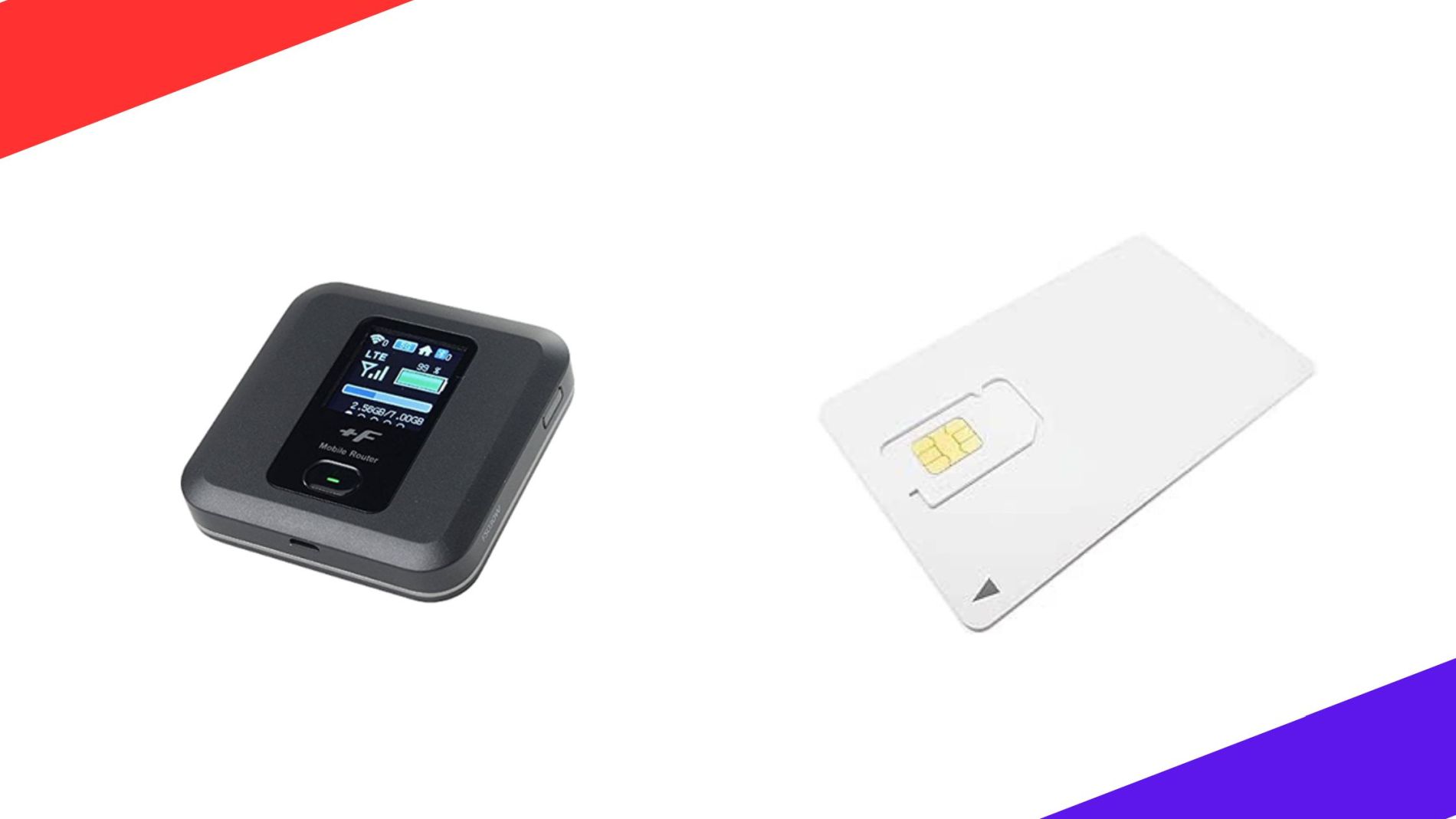
Pocket Wi-Fi vs. eSIM: Why Pocket WiFi is the Best Internet Option for Japan in 2025?
Picture this: You’ve just landed in Tokyo, excited to explore the city. You open your phone to check Google Maps, but—no signal. You scramble to find airport WiFi, only to realize it’s painfully slow. This is why having a reliable internet solution is a must when traveling in Japan.
When it comes to staying connected, you have three main options: Pocket WiFi, eSIM, and Physical SIM Cards. Each has its pros and cons, but if you want the most reliable, stress-free experience, Pocket WiFi is hands-down the best choice.
What Are Your Internet Options in Japan?
Let’s break it down:
- Pocket WiFi: A small portable router that gives you unlimited high-speed internet. Perfect for families, groups, and heavy data users.
- eSIM: A digital SIM that you can activate instantly, but it comes with data limits and device compatibility issues.
- Physical SIM Card: A prepaid SIM that requires swapping your current SIM and setting up APN configurations. Often slower and less convenient.
Pocket WiFi: The Most Reliable and Hassle-Free Option
Pocket WiFi is a portable router that provides high-speed internet with unlimited data. It’s the best option for travelers who need stable connectivity, multiple device support, and easy setup. Whether you’re traveling with family, using multiple gadgets, or need a strong connection for work, Pocket WiFi is the way to go.
eSIM: A Convenient but Limited Alternative
eSIMs can be activated digitally, eliminating the need for a physical SIM card. However, not all phones support eSIMs, and most plans come with data limits. If you’re a solo traveler who only needs occasional connectivity, an eSIM might work—but beware of compatibility issues and potential throttling.
Physical SIM Card: A Basic Option with Some Drawbacks
A prepaid SIM card requires removing your existing SIM and inserting a Japanese one. Your phone must be SIM-free (unlocked), and some SIMs require manual APN configuration. While this option provides local connectivity, it comes with certain limitations: Most prepaid SIMs in Japan come with limited data plans, and some do not allow hotspot sharing. Additionally, purchasing a SIM at the airport or in local stores can be expensive, and activation may require following setup instructions in Japanese.
Why Pocket WiFi is the Best Choice for Japan Travelers

Pocket WiFi, or moblie WiFi, allows multiple devices to connect to the internet simultaneously. For smartphones from countries outside Japan, there may be compatibility issues with Japanese mobile network frequencies.
As a device designed to support multiple connections, it is especially convenient for travelers using multiple devices or those traveling with family or friends. With one Portable WiFi device, everyone can stay connected, and this option can sometimes be more cost-effective.
Reliable High-Speed Internet Everywhere
Japan’s public WiFi can be unreliable, and eSIMs often use lower-priority networks. Pocket WiFi, on the other hand, connects to Japan’s largest carriers, ensuring fast speeds and stable connectivity even on bullet trains or in rural areas.
No Data Limits, No Speed Throttling
Many eSIMs and SIM cards come with daily or monthly data caps. Imagine streaming Netflix in your hotel and suddenly hitting your limit—goodbye, high-speed internet! Some Pocket WiFi plans can offer truly unlimited data, so you never have to worry about slowdowns.
Connect Multiple Devices at Once
With an eSIM or SIM card, only your phone gets internet access. What about your tablet, laptop, or your travel buddy’s phone? With Pocket WiFi, you can connect multiple devices simultaneously, making it perfect for families and groups.
For families or group travelers, Pocket WiFi saves 50%+ compared to buying multiple eSIMs.
Easy Pickup & Return
No need to hunt down a store. Pick up your Pocket WiFi at:
- Airport Post Offices: Conveniently located in major Japanese airports.
- Kansai International Airport: Get it directly from the Sakura Mobile Counter.
- Hotel & Residence Delivery: Have it waiting for you when you check into your hotel.
Compared to other rental services, CDJapan Rental's Pocket WiFi offers better pricing while maintaining top-tier speed and reliability.
Book Your Pocket WiFi Today – Pick Up at the Airport or Your Hotel!The Downsides of eSIM: What They Don’t Tell You
eSIM sounds great in theory, but there are a few things you should know before relying on it for your Japan trip.
On platforms like Reddit and TripAdvisor, travelers have mixed reviews about eSIMs in Japan. Some love the instant activation, while others run into issues like network instability, unexpected data limits, or difficulty setting it up.
“I thought eSIM would be the easiest option, but I had trouble getting it to work on my phone. Ended up renting a Pocket WiFi instead, and it was much smoother.” - Reddit User
“eSIM was fine for Google Maps and messaging, but I hit my data limit halfway through my trip. I wish I had gone with unlimited Pocket WiFi.” - TripAdvisor Review
Not All Phones Support eSIM
Many travelers find it frustrating due to compatibility issues.
Before you buy an eSIM, you’ll need to check if your phone even supports it. Some older iPhones, budget Android devices, and international models may not be compatible.
Data Caps and Speed Throttling
Most eSIMs have strict data limits. If you hit your cap, your speeds may drop to an unusable crawl—frustrating when you need directions or want to upload photos.
Limited or No Hotspot Sharing
Many eSIM providers restrict tethering, so you won’t be able to share your connection with a laptop or tablet. If you’re traveling with others, this can be a major inconvenience.
Common Questions About Internet in Japan
1. Can I pick up Pocket WiFi at the airport?
Yes! We offer pickup at major airport post offices and the Sakura Mobile Counter in Kansai International Airport.
2. What happens if I lose my Pocket WiFi?
If your device is lost, a replacement fee will apply. We recommend using the included carrying pouch to keep it safe.
3. Which is better for Japan: eSIM or Pocket WiFi?
Pocket WiFi is better for most travelers due to its unlimited data, stability, and multi-device support. eSIM is a decent backup but comes with limitations.
What Travelers Say: Real Experiences
The whole experience was very smooth and easy. The pocket Wifi device was delivered to my hotel in advance so I could pick it up at check-in. Coverage in Tokyo was spotless and the return process was easy and without any issues.
My prior experiences with rental SIMs always involved a short service period and me slamming into the daily packet limit. This time, with the 5G WiMAX mobile AP with 30 days of unlimited data, I had no issues using data as I saw fit every day for my entire month in Japan.
The router was very snall asy to slip,into a jacket pocket or back pack. We were able to take it everywhere we went , ensuring we constantly had safe secure internet access, which was essential. I ordered it before we left for our 3 week trip and arranged for it to be waiting for us at our hotel. It came with all the necessary information and a return envelope. I posted it back at Tokyo Airport prior to our departure Fantastic service...would recommend to anyone travelling to Japan.
I can definitely recommend this service. Your order is easily manageable via a self service UI and you can even enhance your rental time on the fly. The device was charged and ready to go. I would recommend bringing your own Powerbank as the device charge will not last a day. FaceTime did not work so great. For simple browsing and navigating it was great. Coverage was sufficient in Kyoto / Tokyo / Nara / Nagoya. The coverage was bad in crowded area, on the Shinkanzen or in buildings. The device can easily be returned via the included prepaid envelope which we placed in a post box at the airport department section. Overall was the best experience we had in comparison with similar services.
Japan Pocket WiFi vs. eSIM vs. SIM Card: Side-by-Side Comparison

| Feature | Pocket WiFi | eSIM | SIM Card |
|---|---|---|---|
| Works on all devices | ✅ Yes | ❌ No (requires eSIM-compatible phone) | ❌ No (requires SIM-free phone) |
| Unlimited data | ✅ Yes Often provides ample data capacity, with options exceeding 100GB. |
❌ No (most plans have limits) Generally offers smaller data capacities due to a short-term usage assumption. Recently, options with around 50GB capacity have become available. |
|
| Supports multiple users | ✅ Yes | ❌ No | ❌ No |
| Stable high-speed connection | ✅ Yes Utilizes major carriers, ensuring fast speeds and stable connectivity. eSIMs and Prepaid SIM Cards from MVNOs may have slower speeds but pose no issues with smartphones. For activities like online business meetings, opting for Mobile WiFi is advisable. |
⚠️ Depends on the provider Offers fast communication speeds and maintains stability even with multiple connected devices. Speeds may be inferior to Pocket WiFi, but for smartphone usage, it remains problem-free. |
|
How Fast Should Your Internet Be in Japan?
When using a smartphone during travel, activities such as web browsing, messaging, and using Google Maps are likely to be the primary focus. In such cases, a communication speed of 3-5 Mbps should be sufficient. However, if your stay involves business-related communication through video or if you want to watch videos, you might need a bit more speed.
For reference, here is a data illustrating the ideal internet speeds needed for various activities.
| Activity | Necessary Speed | |
| Online Games | 25 Mbps | WiMAX |
| Online Meetings | 10 Mbps | Pocket Wi-Fi |
| Video Streaming (1080p) | 5 Mbps | Pocket Wi-Fi Prepaid SIM eSIM |
| Video Streaming (720p) | 3 Mbps | Pocket Wi-Fi Prepaid SIM eSIM |
| Web / Emails | 1 Mbps | Pocket Wi-Fi Prepaid SIM eSIM |
Get a Special Discount – Book Now!
✈️ Don’t Let Bad Internet Ruin Your Japan Trip!
Imagine standing in Shibuya, trying to navigate, but your SIM card data is out! Avoid the hassle—Pocket WiFi gives you unlimited, fast, and secure internet throughout Japan.
🎒 Perfect for solo travelers, families, and digital nomads.
💰 Save with promo code CDJ10 – Book today!
At CDJapan Rental, we offer high school students visiting Japan options like Prepaid SIM cards and eSIMs with large data capacities and fast communication capabilities. Additionally, we provide Portable Wi-Fi for short to long-term rentals. Many people from different countries have used our services and left numerous positive reviews. Feel free to give it a try when you visit Japan!